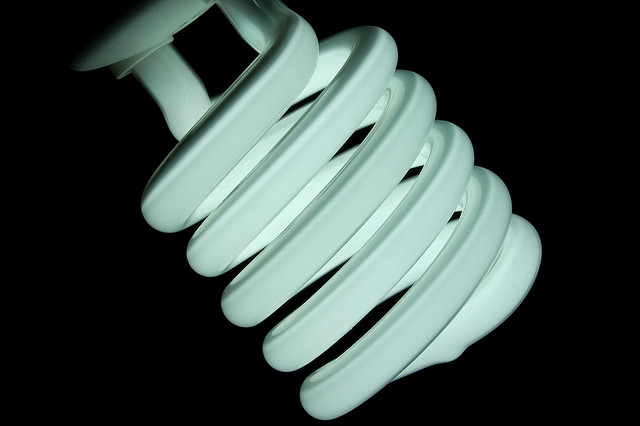
A lot of us have made efforts in our personal lives to save energy. One of the easiest adjustments has been to buy energy-saving light bulbs-those twisty shaped alternatives that use less electricity and last longer, all in the name of saving our planet’s valuable resources.
Well, I came across some disturbing news a few days ago. According to recent scientific studies conducted in Berlin, these same energy-saving bulbs emit poisonous materials when switched on. Among them: phenol, naphthalene, and styrene. Let me tell you a little more about these toxins:
- Phenol is a benzene derivative used in making plastics, adhesives, and synthetic fibers. It’s also used as an antiseptic and a general disinfectant. It’s highly irritating to the skin, eyes, and mucous membranes, and animal studies have linked phenol with developmental abnormalities.
- Naphthalene is used in the production of mothballs, insecticides, resins, and in other chemicals. According to the EPA, acute exposure can lead to liver and neurological damage. Humans exposed by inhalation or ingestion seem to have a higher risk of cataracts. Animal studies have shown increased risk of cancer when exposed by inhalation. The EPA classifies naphthalene as a possible human carcinogen.
- Styrene is used in the production of plastics and resins. Chronic exposure in humans creates headaches, fatigue, weakness, depression, and hearing loss. Several epidemiologic studies suggest a connection between styrene exposure and an increased risk of leukemia and lymphoma. The International Agency for Research on Cancer (IARC) classifies it as possibly carcinogenic to humans. The EPA is currently reviewing it for classification.
According to Peter Braun, who carried out the tests, “For such carcinogenic substances it is important they are kept as far away as possible from the human environment.” Though experts warn that more studies need to be done, already the recommendation is that you use these bulbs sparingly, and always in ventilated areas-definitely not in close proximity to your head.
This isn’t the first time these bulbs have come under fire. They contain mercury, a concern if the glass is broken-though is not a hazard in an intact bulb. The Migraine Action Association stated a couple years ago that the links between the bulbs and severe migraine headaches made them a poor choice for people who suffer from headaches. The bulbs are suspected of increasing the risk of seizures in people with epilepsy. Scientific studies in Israel conducted by professor Abraham Haim suggest the lights-when left on at night-interfere with the body’s production of melatonin, possibly increasing cancer risk since melatonin is thought to protect against some breast and prostate cancers. According to the BBC News, energy saving light bulbs (i.e., fluorescent bulbs) may put people at risk of painful skin reactions, including eczema and dermatitis.
What’s especially concerning is that some European countries have already started to phase out traditional incandescent bulbs in favor of these energy-saving options, leaving people fewer choices.
It’s good that we’re trying to make changes to save our precious resources. However, we must be careful of limiting our options before we know all the facts. On this one, my advice is this-these bulbs may still work well in large, open rooms, but avoid them in the main areas of the house where you spend most of your time, and forget them altogether if you have other health concerns such as headaches, skin conditions, epilepsy, or if you’re a cancer survivor. There are a lot of ways we can pitch in to help save our planet-we don’t need to put our health at risk.
Do you use energy-saving light bulbs? Have you changed your mind as a result of this study?
Photo courtesy Pablo S Rios via Flickr.com.

